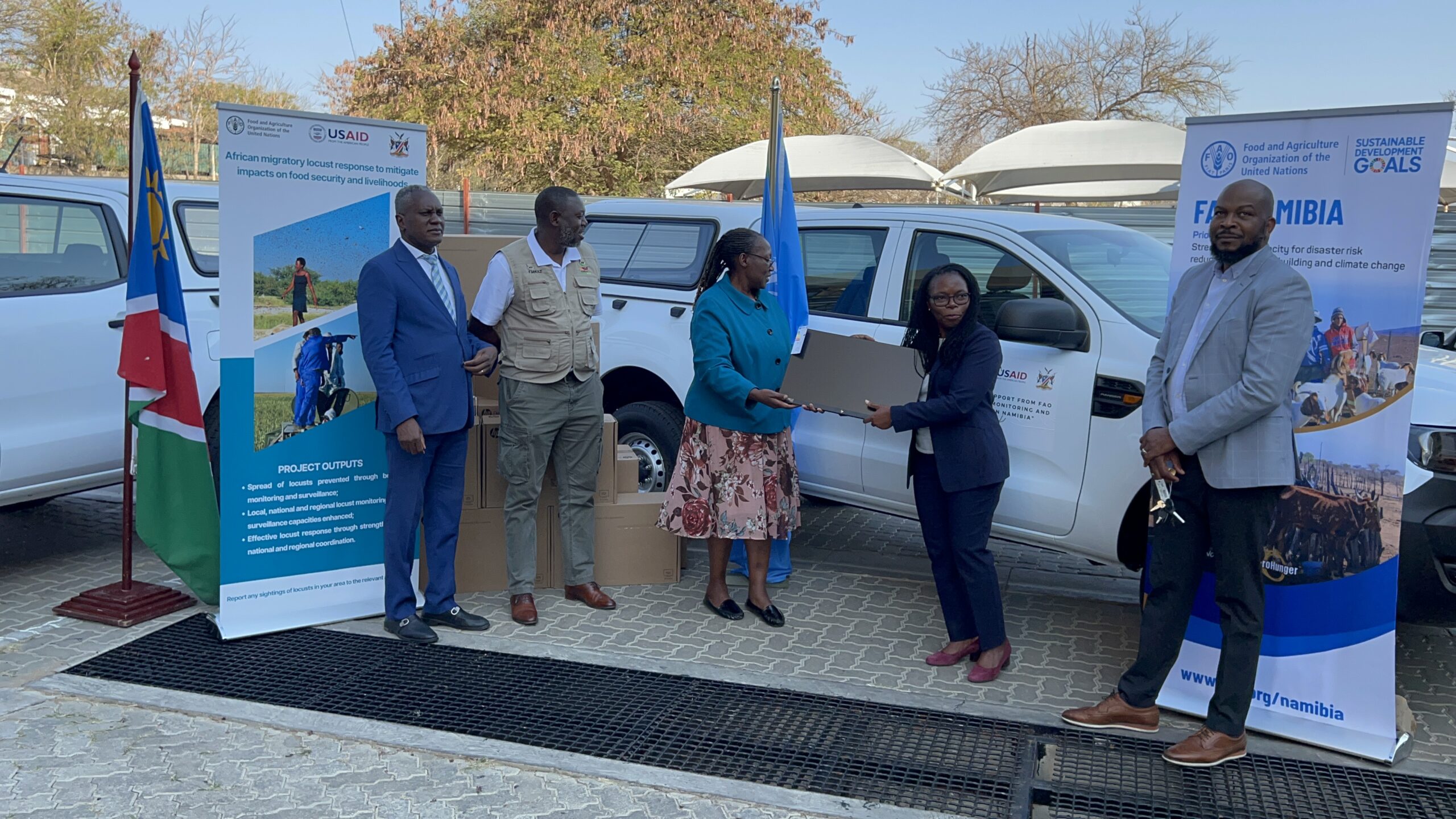The locusts have damaged over 2 000 ha of cropland and more than 700 000 ha of grazing land. More than 3 million ha have been surveyed.
The Food and Agriculture Organization of the United Nations (FAO) has handed over two brand new vehicles and nine (9) desktop computers to strengthen Namibia’s locust surveillance and monitoring, and to inform response interventions.
The equipment were purchased with funds from a regional project “African Migratory Locust Response to Mitigate Impacts on Food Security and Livelihoods” supported by the United States Agency for International Development (USAID)’s Bureau for Humanitarian Assistance (BHA). The project was implemented in Angola, Botswana, Namibia, Zambia and Zimbabwe – being the countries that were worst hit by the locusts.
Wave after wave of locusts
The consecutive outbreaks of African Migratory Locust (AML), Red Locust and Brown Locust dating back from February 2020 to May/June 2022 destroyed crops and grazing, thereby impacting on the livelihoods of vulnerable communities in the north-eastern, north-central regions and the southern parts of Namibia. The communities had been affected by floods, drought and the impacts of COVID-19, and had barely recovered from shocks associated with these disasters.
Since then, the country has been conducting control and early warning operations for existing and future locust outbreaks.
“The support comes at the right time. Since 2020, we have embarked on extensive surveillance, monitoring and control of the African Migratory Locust and Brown Locust which is an expensive operation. The support from FAO has smoothened the operation, and we will now boost ground surveillance and control operations in order to contain the pest and safeguard food and nutrition security, and ultimately, the livelihood of the people,” Ndiyakupi Nghituwamata, Executive Direct or in the Ministry of Agriculture, Water and Land Reform, said.
or in the Ministry of Agriculture, Water and Land Reform, said.
Timely intervention to protect lives
FAO has supported Namibia by providing training at national and community levels in effective locust monitoring including surveillance, mapping and reporting. 29 government vehicles deployed to locust surveillance and monitoring operations in affected regions were serviced and repaired.
“The support is aimed to protect food and nutrition security, and livelihoods of vulnerable people in locust-affected countries from locust damage in an environmentally and socially sustainable manner. I re-confirm FAO’s commitment to ensuring that the outbreak is kept to levels that do not threaten the food and security situation of the already vulnerable communities,” Farayi Zimudzi, FAO Representative to Namibia, said.
58 technical staff and 384 farmers and youth have been trained and capacitated through this project which accelerated the momentum to win the battle with the locusts.




















